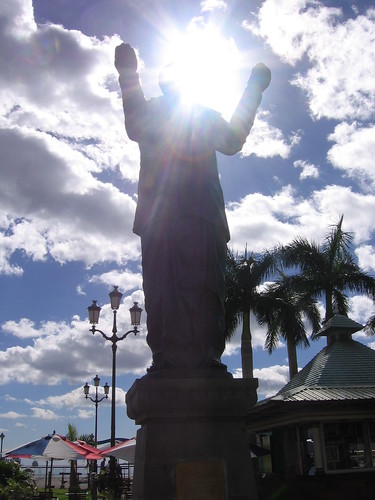Recollections on the architecture of Aldo Rossi
Visited the Bonnefanten Museum in Maastricht last Sunday. Opened in 1995, this art gallery was one of the last buildings designed by the celebrated Italian post-modernist architect Aldo Rossi before his death in a car accident in 1997. Having read about and studied some of Rossi work at University, it was interesting to experience one of his buildings for the first time.
Rossi's work is concerned with the problems of historical reference and collective memory in a rapidly changing urban landscape. For Kurt W. Forster, what Rossi's buildings intimate "is the possibility of an order of things that allows us to experience the present as a suspended moment in the passage from the past into the future."
According to David Harvey ('The Condition of Postmodernity', 1990), "The task of the architect, in Rossi's view, is to participate 'freely' in the production of 'monuments' expressive of collective memory, while recognizing that what constitutes a monument is itself a mystery which is 'above all to be found in the secret and ceaseless will of its collective manifestations'."
Rossi's work has been criticized for its fascistic overtones, in particular, his designs for student accomodation in Chieti and for San Cataldo Cemetery in Modena (both Italy) bear an unpleasant resemblance to the layout of the Nazi death camps.
While less extreme, the Bonnfanten also incorporates certain elements from school/prison architecture into its design, including a 'panopticon' observation tower motif, as well as 'pure' forms such as pyramids and triangles (see photos). In this instance, the motifs were subtle enough to provoke without creating a sense of revulsion. Is that a good thing?
Rossi's work is concerned with the problems of historical reference and collective memory in a rapidly changing urban landscape. For Kurt W. Forster, what Rossi's buildings intimate "is the possibility of an order of things that allows us to experience the present as a suspended moment in the passage from the past into the future."
According to David Harvey ('The Condition of Postmodernity', 1990), "The task of the architect, in Rossi's view, is to participate 'freely' in the production of 'monuments' expressive of collective memory, while recognizing that what constitutes a monument is itself a mystery which is 'above all to be found in the secret and ceaseless will of its collective manifestations'."
Rossi's work has been criticized for its fascistic overtones, in particular, his designs for student accomodation in Chieti and for San Cataldo Cemetery in Modena (both Italy) bear an unpleasant resemblance to the layout of the Nazi death camps.
While less extreme, the Bonnfanten also incorporates certain elements from school/prison architecture into its design, including a 'panopticon' observation tower motif, as well as 'pure' forms such as pyramids and triangles (see photos). In this instance, the motifs were subtle enough to provoke without creating a sense of revulsion. Is that a good thing?
Labels: On the road

0 Comments:
Post a Comment
<< Home